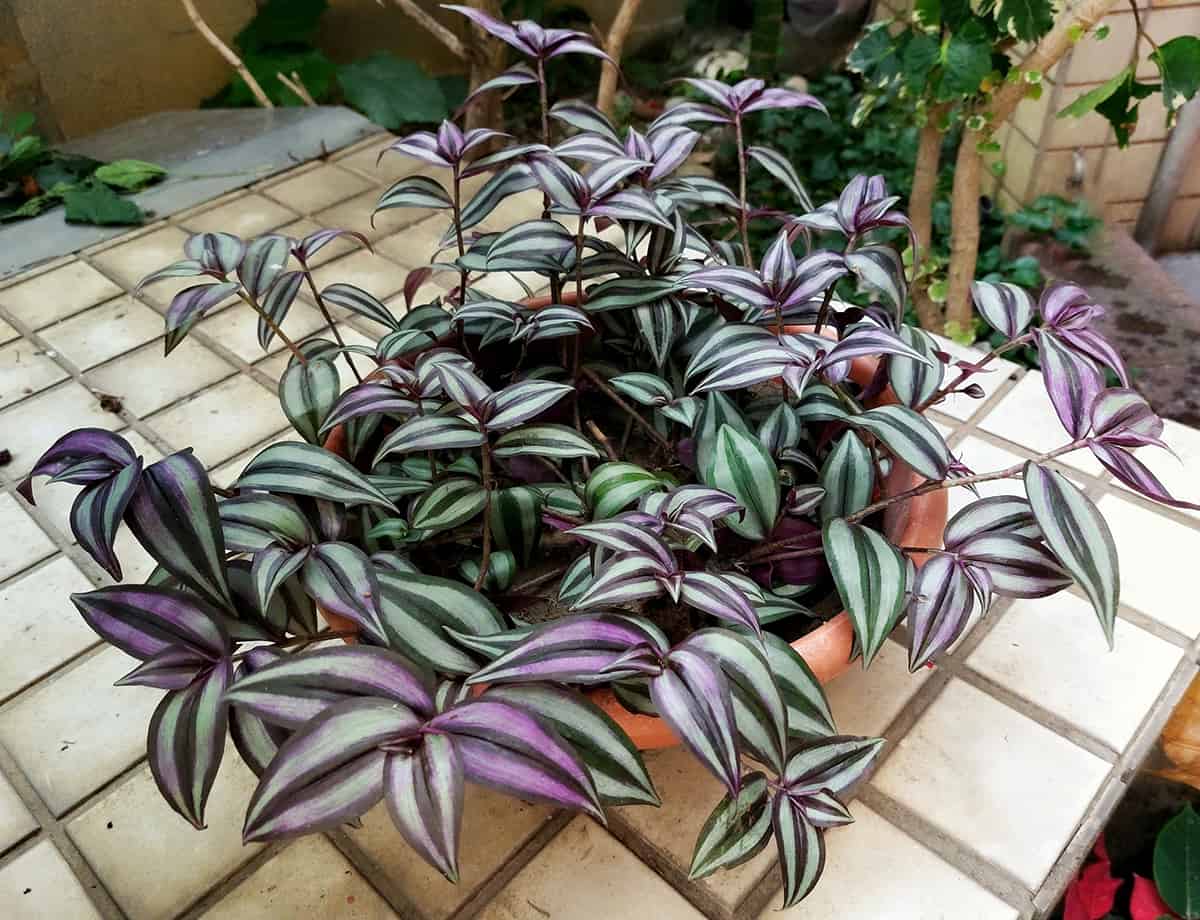Looking to add some green to your home with a plant that’s easy to care for? Meet the Inch Plant, a vibrant, fast-growing green that can brighten any corner with minimal effort. If you’ve struggled with plants before, worry not.
The Inch Plant is forgiving and adaptable, making it a perfect companion for busy or forgetful plant lovers. In this guide, you’ll learn exactly how to water, feed, propagate, and place your Inch Plant for it to thrive. Get ready to give your space a natural splash of color and learn the simple steps to keep your Inch Plant happy and healthy.
Table of Contents
Inch Plant Overview
Here are its main characteristics and information
| Common Name | Inch Plant, Wandering Jew, Spiderwort, Purple Heart |
| Botanical Name | Tradescantia zebrina |
| Family | Commelinaceae |
| History & Origin | Native to Mexico and Central America |
| Plant Type | Perennial, evergreen |
| Mature Size | Up to 6 inches tall, 2-3 feet spread |
| Sun Exposure | Bright, indirect light |
| Soil Type | Well-draining, moist potting mix |
| Soil pH | Slightly acidic to neutral (6.0-7.0) |
| Temperature | Prefers 65°F-75°F (18°C-24°C) |
| Watering | Keep soil moist, not waterlogged |
| Fertilizing | Monthly during growth (spring/summer) |
| Bloom Time | Rarely blooms indoors |
| Flower Color | Pale purple |
| Hardiness Zone | Zones 9-12 |
| Toxicity | Toxic to pets if ingested |
| Common Problems | Root rot, spider mites, lack of variegation |
Species of the Inch Plant
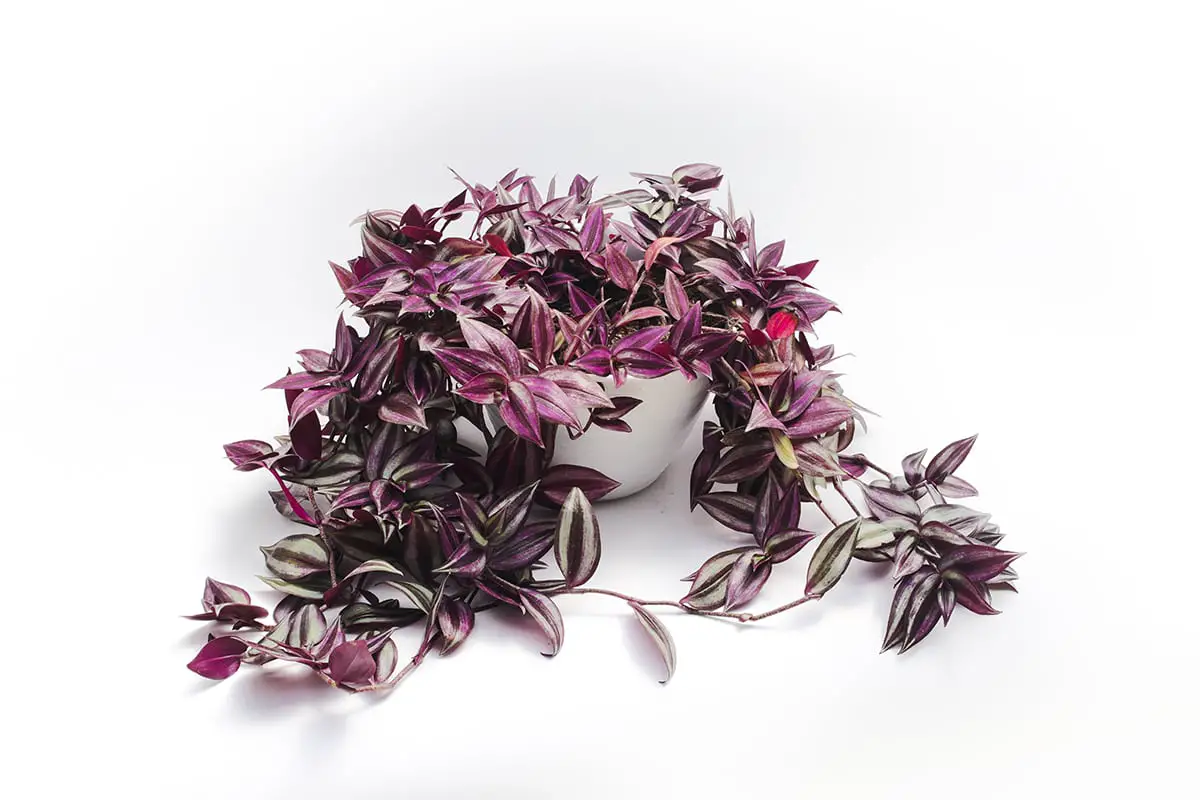
The Inch Plant belongs to the Tradescantia genus. There are over 75 species of this plant. This genus boasts a range of varieties, each with unique characteristics that make them favorites among plant enthusiasts. Here are some well-known varieties:
- Tradescantia zebrina: Often recognized by its silver and purple striped leaves, Tradescantia zebrina, commonly known as the “zebra plant,” is a striking variety that adds a splash of color to any space.
- Tradescantia fluminensis: Known for its glossy green leaves and vigorous growth, this variety can thrive in a range of lighting conditions, making it a versatile option for indoor gardeners.
- Tradescantia pallida: Also known as “Purple Heart” or “Purple Queen,” it is distinguished by its deep purple foliage and is often used as a groundcover or in hanging baskets due to its trailing growth habit.
- Tradescantia spathacea: Recognizable by its rosette form and boat-shaped leaves with green tops and purple undersides, it’s often called “Moses-in-the-Cradle” due to its small, white flowers that bloom in a leaf-like bract.
- Tradescantia navicularis: This variety is a bit less common and is characterized by its small, thick, boat-shaped leaves, and a tendency to form dense mats, suitable for small pots or terrariums.
- Tradescantia ‘Green Hill’: Appreciated for its solid green leaves, this variety presents a more subdued look but maintains the same easy-care traits as its more colorful relatives.
Common Names
You might know the Inch Plant by various names. Some common ones are Wandering Jew, Spiderwort, and Purple Heart.
The origin of the common name “Wandering Jew” is a reference to a character in Christian folklore—a man who, according to legend, was cursed to walk the earth until the Second Coming of Christ because he taunted Jesus on the way to the Crucifixion. The name was attached to the plant due to its ability to spread and thrive in various conditions, metaphorically ‘wandering’ through different environments.
However, it’s important to note that the term “Wandering Jew” can be considered offensive due to its association with the derogatory legend. As a result, the use of this name for the plant is declining in favor of the botanical name or other common names such as “inch plant” or “spiderwort.” Many plant enthusiasts and professionals are moving towards using non-offensive, more scientifically accurate nomenclature.
Inch Plant Growing & Care Tips
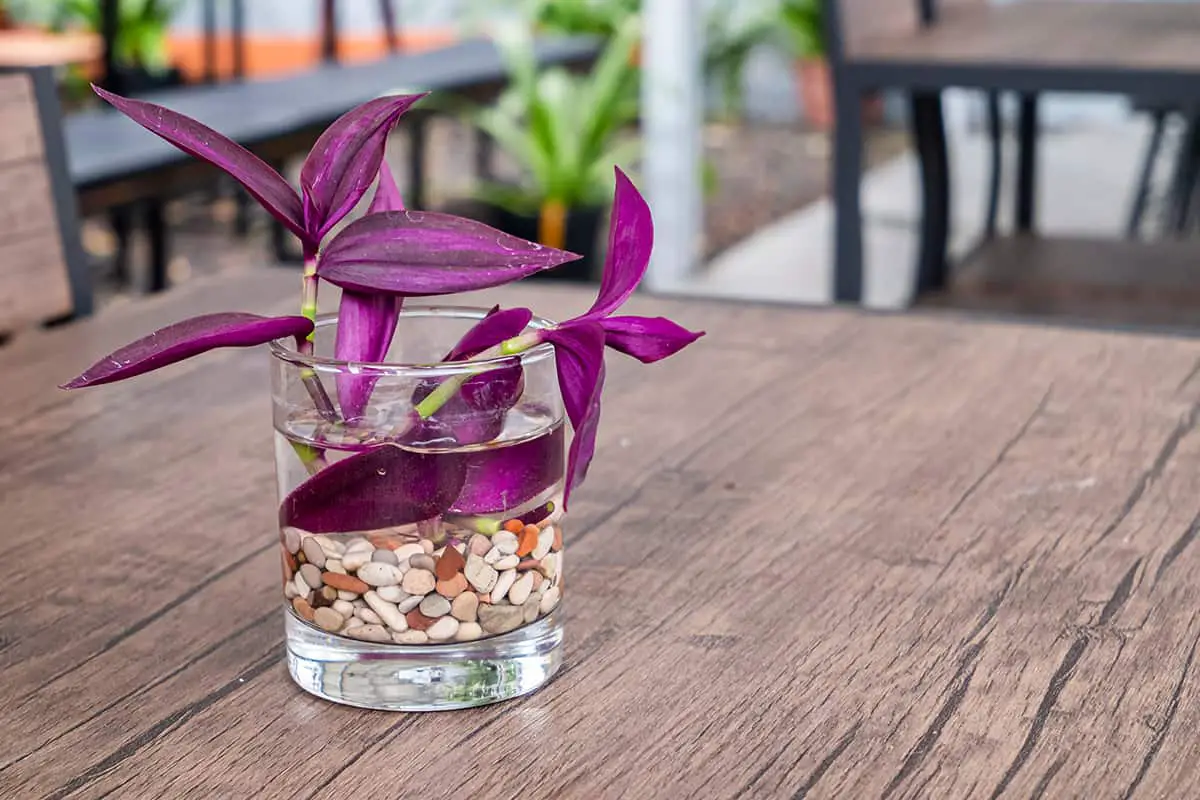
Light Requirements
Inch plants thrive in bright, indirect sunlight. Position your plant near a window with filtered light. Avoid direct sunlight, as it can scorch the leaves.
Soil Type
These plants prefer a well-draining potting mix. A mix containing 50% peat moss and 50% perlite will provide optimal results. This well-aerated combination prevents root rot and supports healthy growth.
Watering Schedule
During the growing season, it’s best to water your inch plant every 7-10 days. In the dormant season, reduce watering to every 14-21 days. Always allow the top inch of soil to dry between waterings to avoid over-watering.
Temperature and Humidity
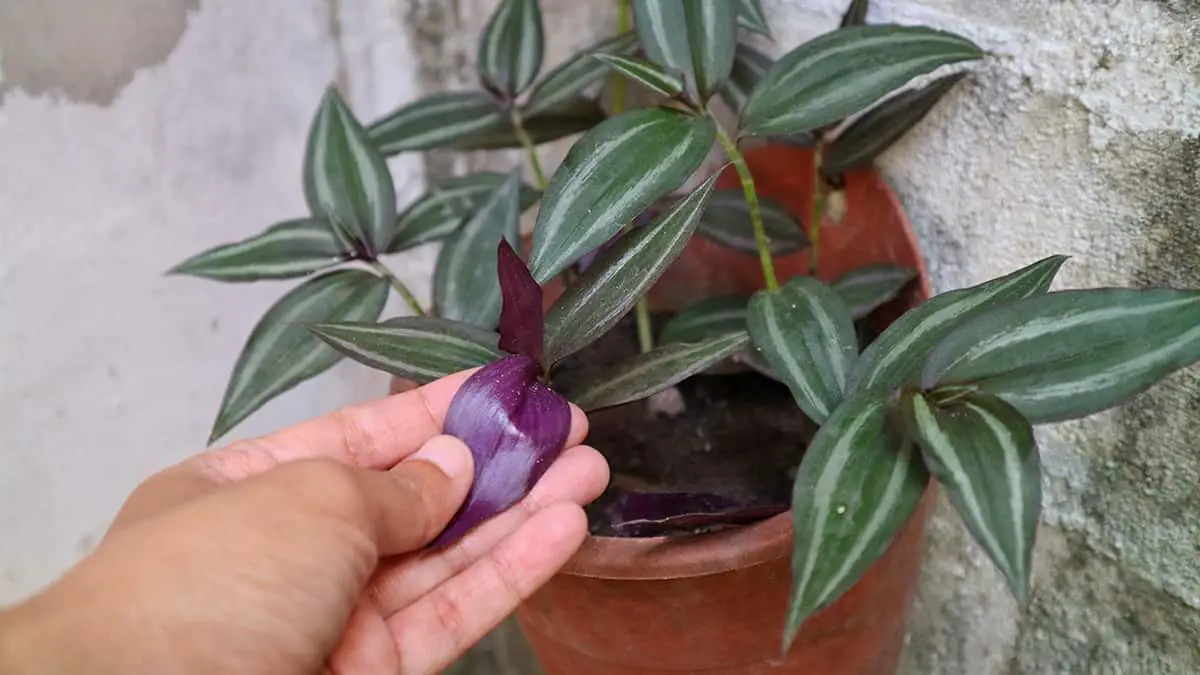
Inch plants enjoy temperatures between 65-75°F (18-24°C). They can tolerate temperatures as low as 50°F (10°C) but may suffer damage below this threshold. Maintain a humidity level of 40-60% for the best results. Mist the leaves frequently or use a pebble tray with water to increase humidity around your inch plant.
Fertilizing
Fertilize your inch plant every month during the growing season. Use a water-soluble, all-purpose houseplant fertilizer at half the recommended strength. Ensure you apply the fertilizer to moist soil, avoiding the roots.
Pruning
Regularly prune your inch plant to maintain its bushy appearance. Remove any yellow or dead leaves as you spot them. For a fuller plant, pinch back the tips of the stems, promoting new growth.
Repotting
Repot your inch plant every 1-2 years or when roots become visible on the soil surface. Choose a pot that is 1-2 inches larger in diameter than the current one. Fill the new pot with a well-draining potting mix and transfer your plant. Water thoroughly to help settle the soil.
- Potting mix: A mixture of peat moss, perlite, and vermiculite works well for inch plants.
- Water: Ensure you are using room-temperature water.
Remember to consistently monitor your inch plant, but refrain from overdoing the care. With these simple steps, your inch plant will thrive and remain a beautiful addition to your space.
Propagation Methods
There are two common methods to propagate your inch plant: leaf cuttings and stem cuttings.
For the leaf-cutting method:
- Snip a healthy leaf from the parent plant.
- Allow the cutting to dry for a day.
- Insert the leaf into moist potting mix.
For the stem-cutting method:
- Cut a 4-6 inch section of healthy stem.
- Remove leaves from the bottom 2 inches.
- Place the cutting in water or moist soil.
Each method has its benefits, so choose the one best suited to your needs.
Troubleshooting Common Issues

Pest Problems
Keep an eye out for pests, like aphids and spider mites. These tiny insects can damage your Inch Plant quickly. To prevent infestations, check the leaves and stems regularly.
If you find pests, act fast. Spray a mixture of water and dish soap on the affected areas. Another option is to use insecticidal soap or neem oil. Repeat treatments until the pests are gone.
Disease Prevention
The Inch Plant can suffer from diseases like root rot and leaf spot. Water management and proper hygiene play a key role in prevention.
Root rot prevention:
- Use well-draining soil
- Don’t overwater your plant
- Ensure the pot has drainage holes
- Empty saucer after watering
Leaf spot prevention:
- Remove and discard affected leaves
- Avoid wetting the leaves when watering
- Provide adequate air circulation around the plant
Benefits and Uses
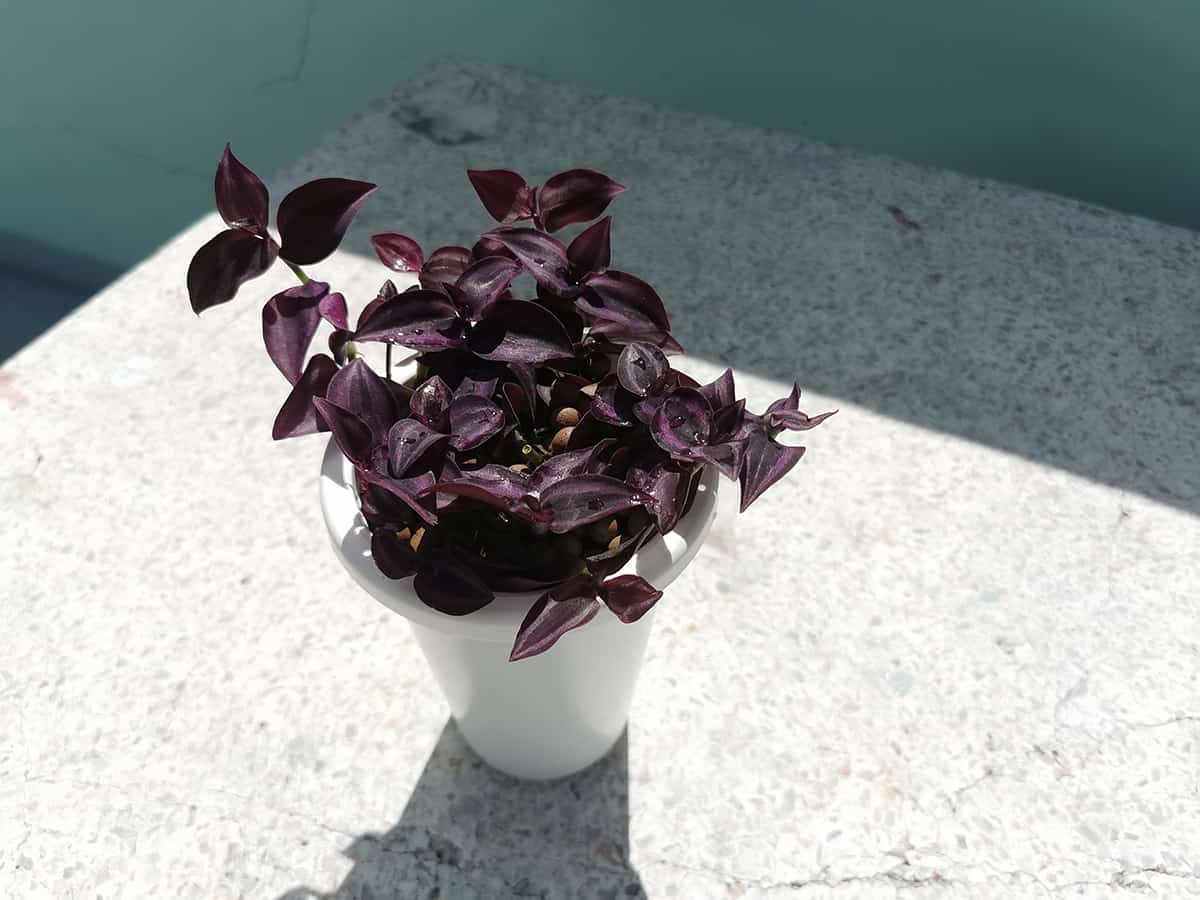
Air Purification
The Inch Plant is known for its air-purifying abilities. It can remove toxins like benzene, formaldehyde, and xylene from your surroundings. This improves the air quality in your home or office, making it a healthier environment.
Decorative Appeal
Inch Plants are versatile and attractive. They can be grown in hanging baskets or as a ground cover. Tradescantia zebrina, with its striking purple and silver leaves, adds a pop of color to your interior. On the other hand, Tradescantia fluminensis has a more subtle, calming green palette for your space.
Safety and Precautions
Pet Safety
Keep your inch plant out of reach from pets. Many species are toxic to animals. Common symptoms include drooling, vomiting, and diarrhea.
| Pet | Symptom 1 | Symptom 2 | Symptom 3 |
|---|---|---|---|
| Cat | Drooling | Vomiting | Diarrhea |
| Dog | Drooling | Vomiting | Diarrhea |
Human Safety
Wear gloves when handling. Avoid touching your face and eyes. Some people may experience skin irritation. Wash your hands after caring for your plant. Keep the plant away from small children who might accidentally ingest it.
